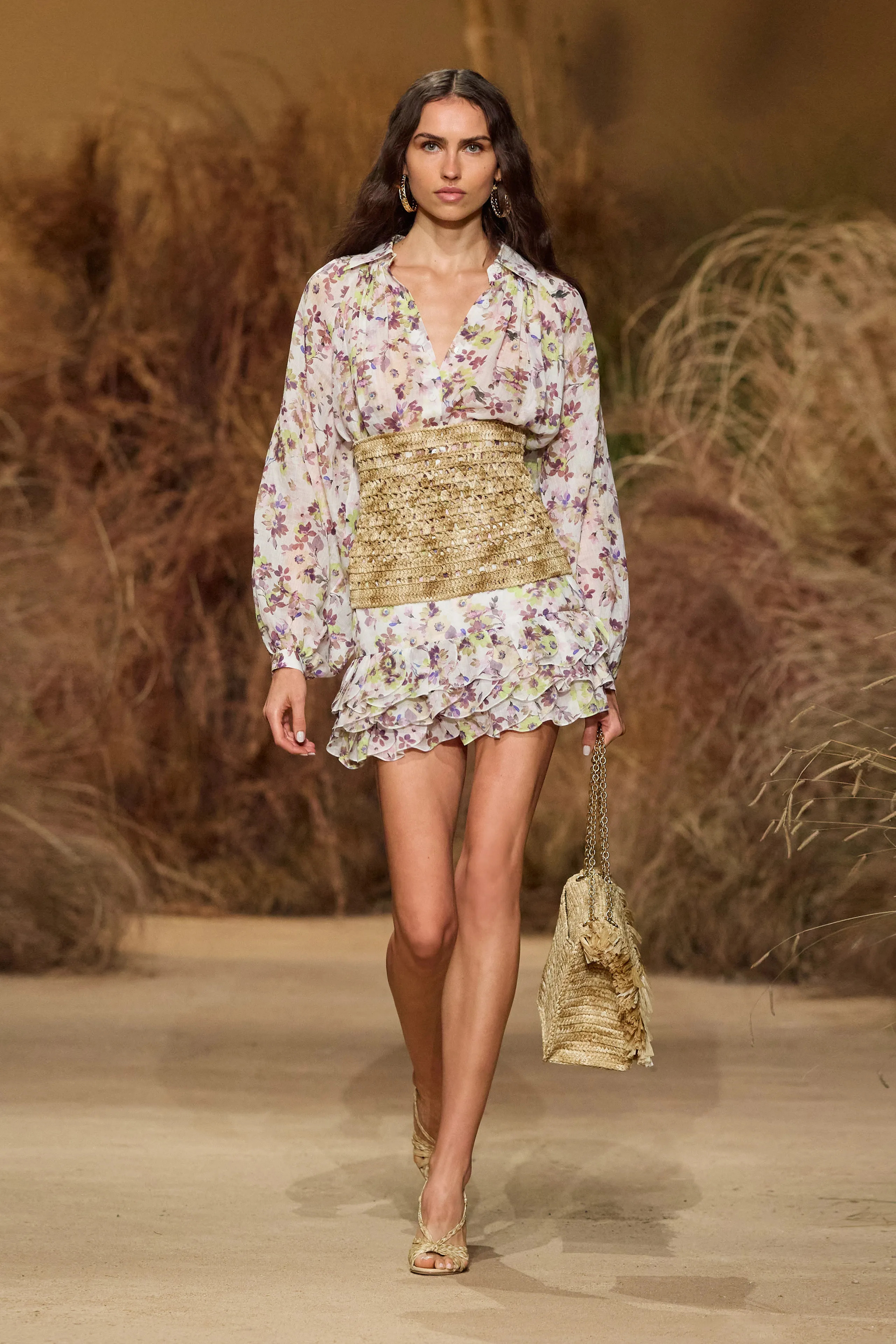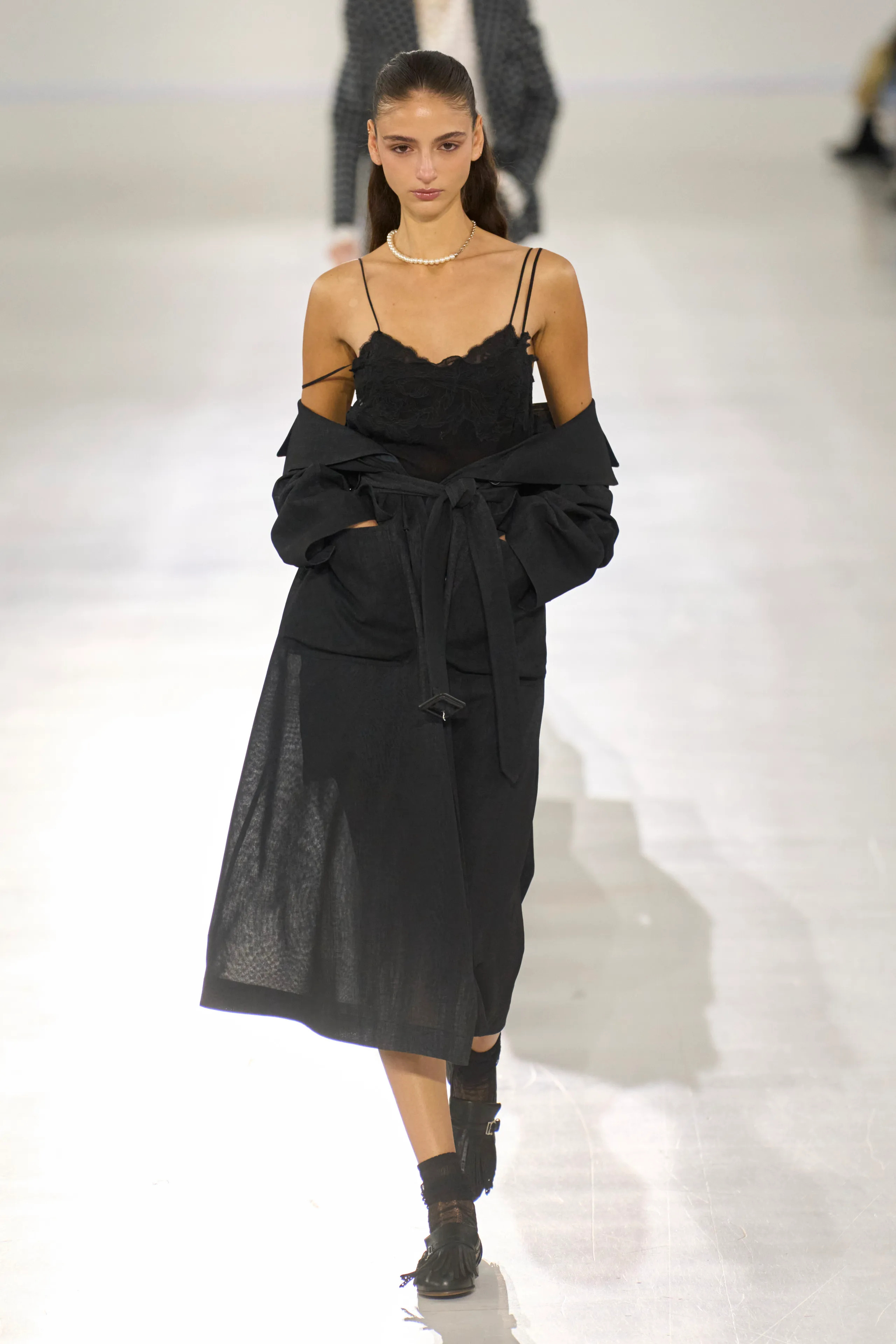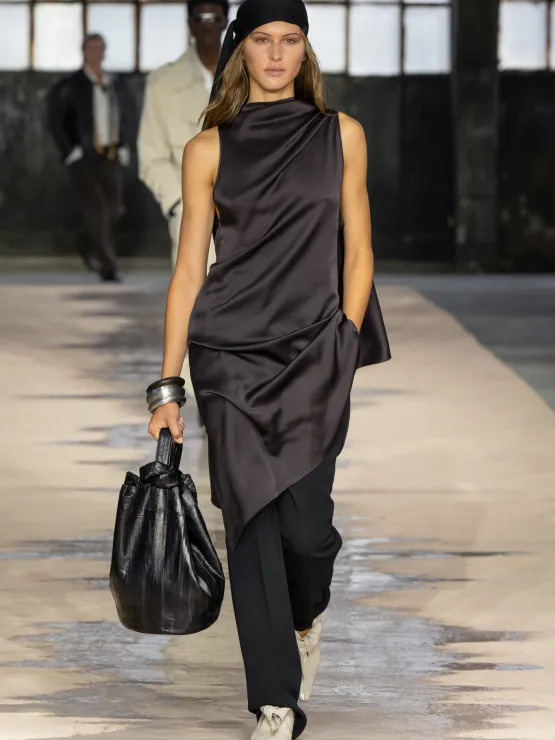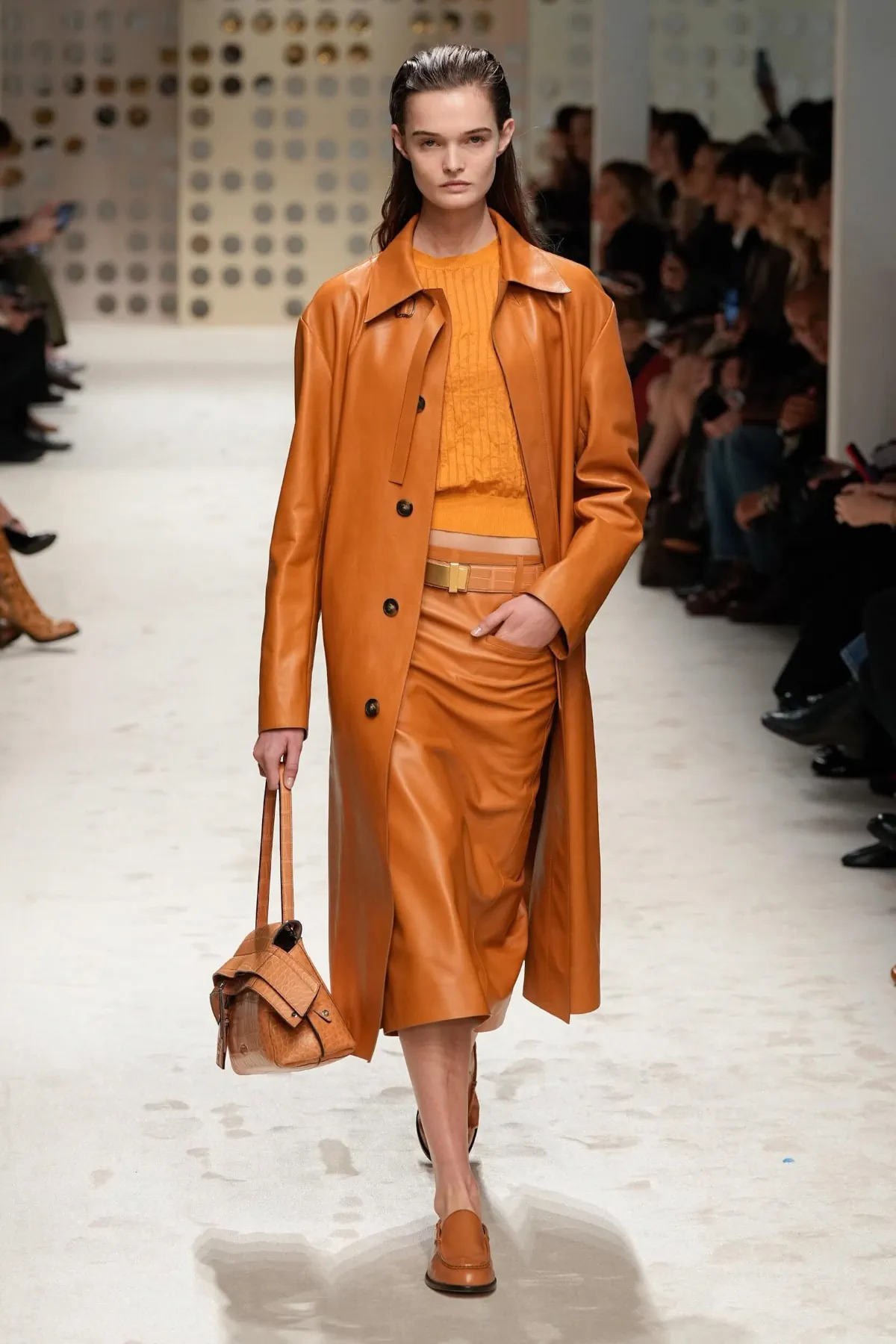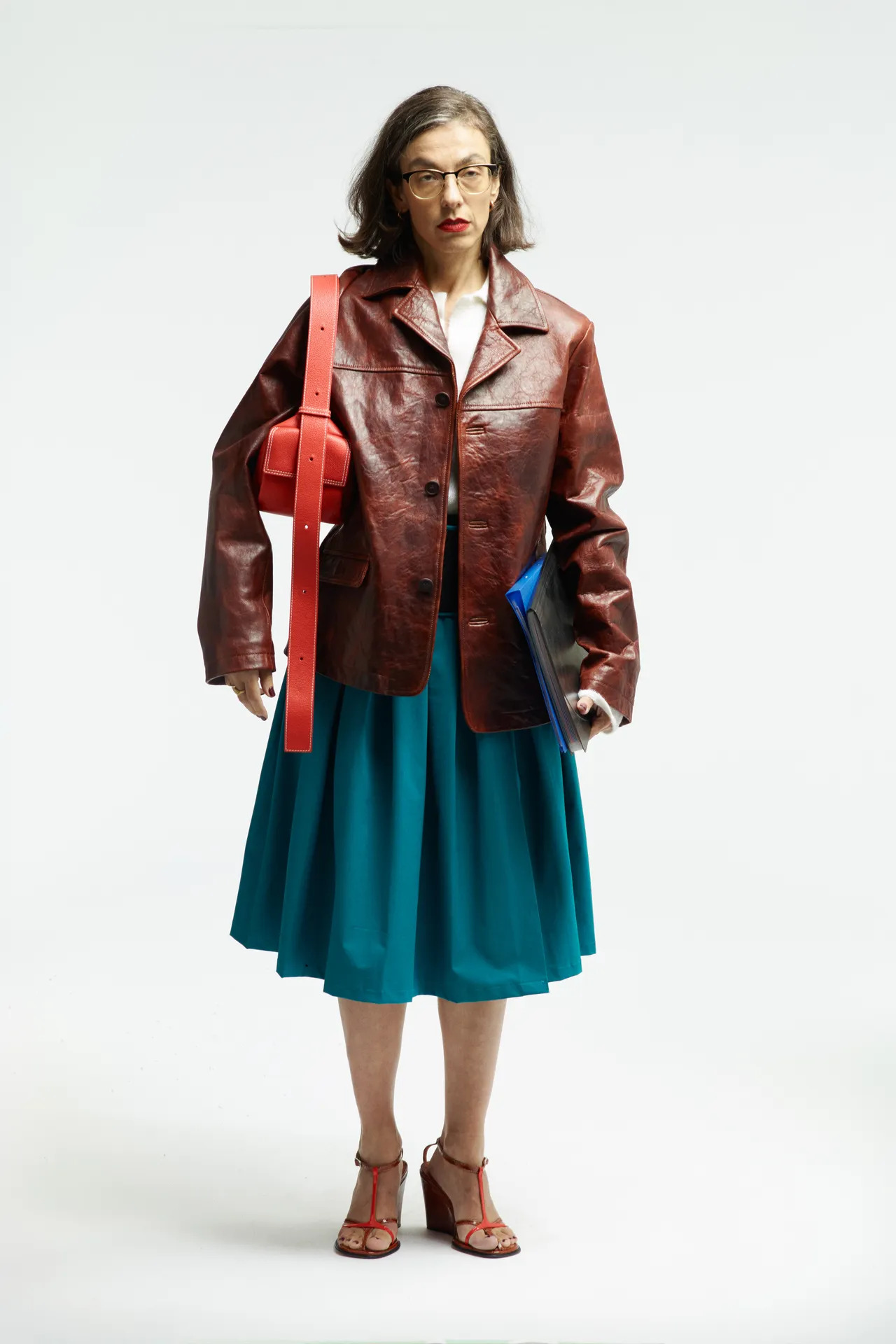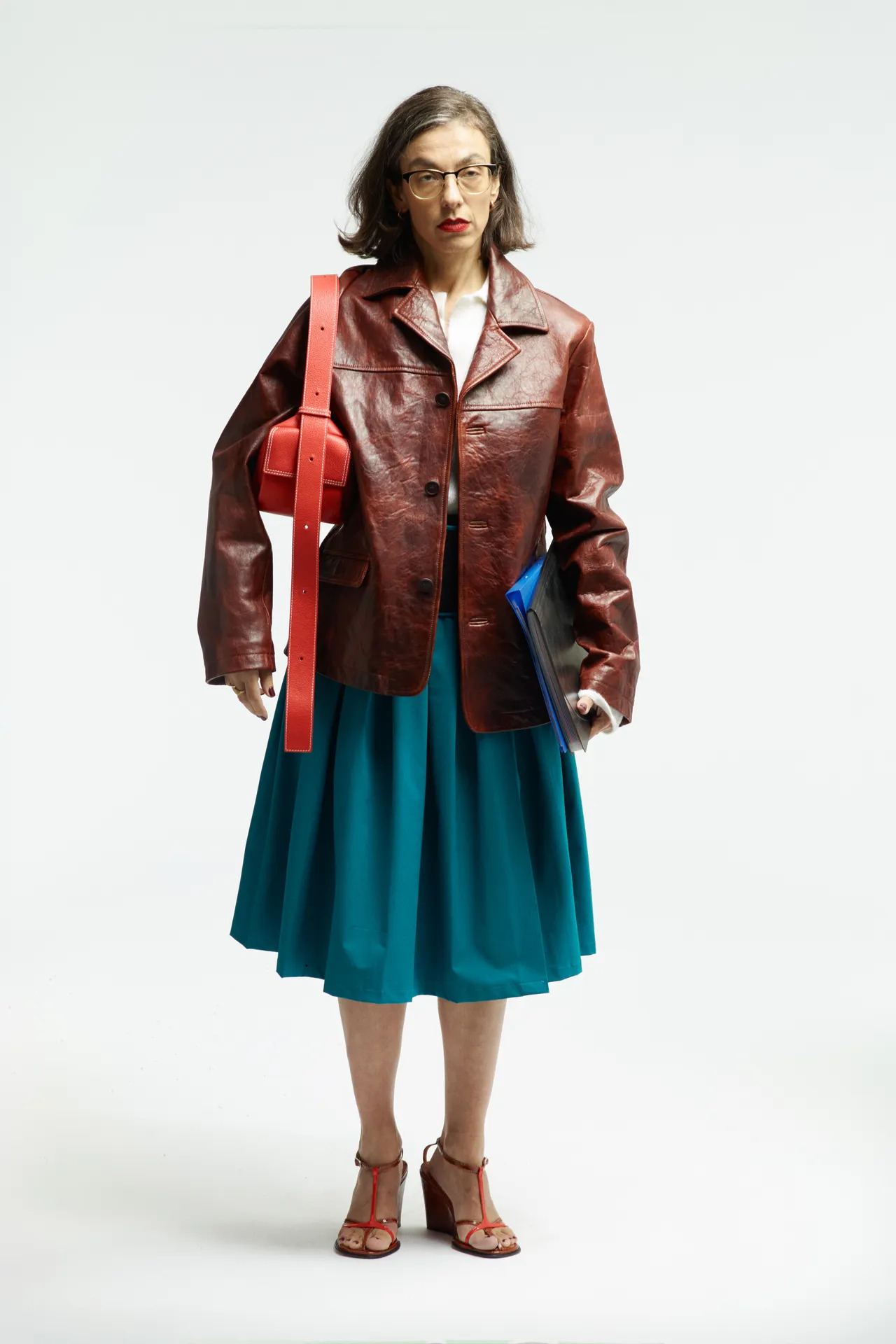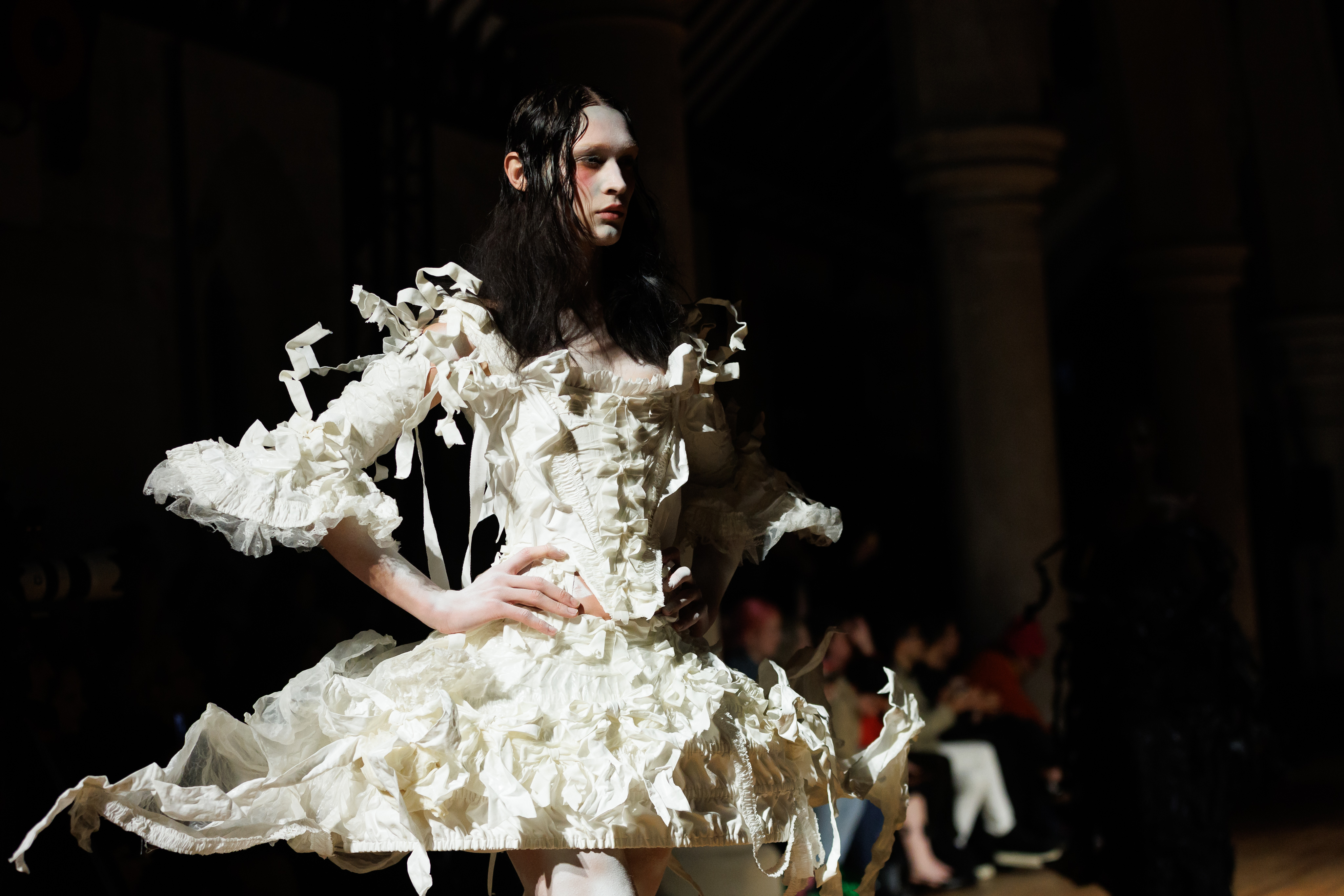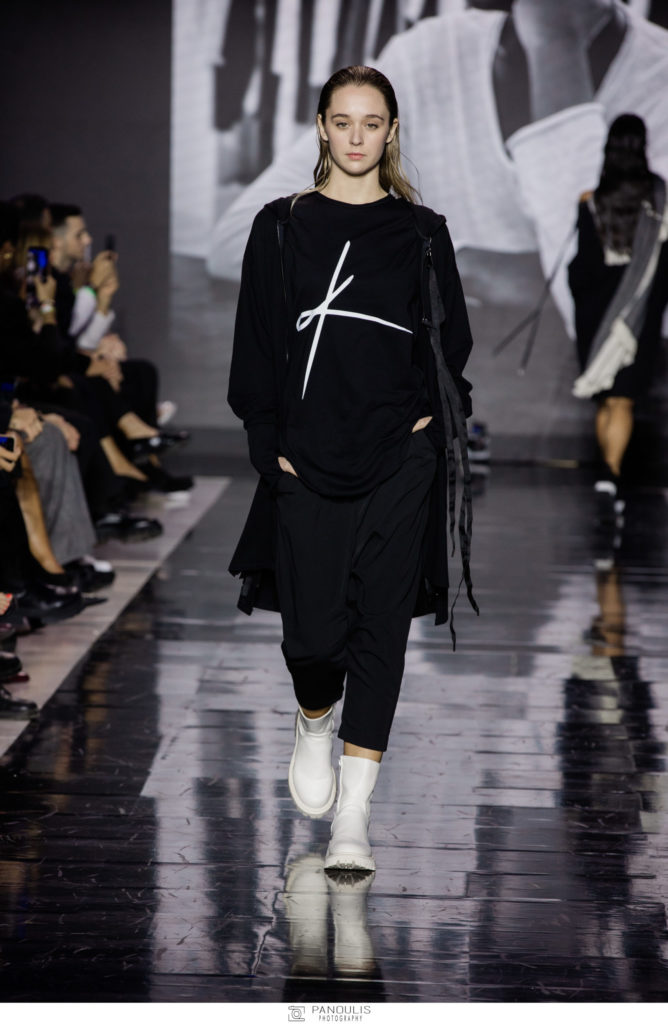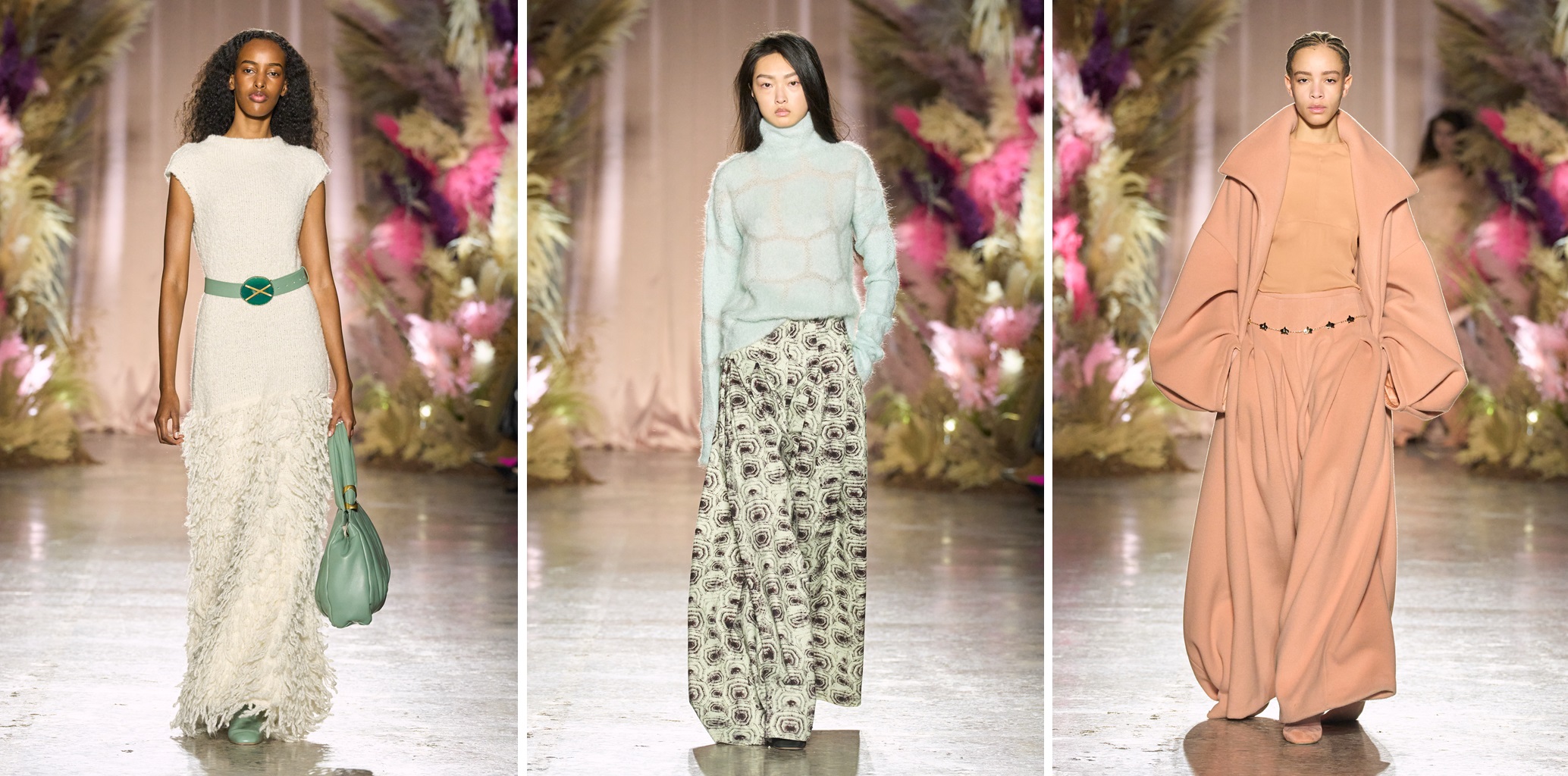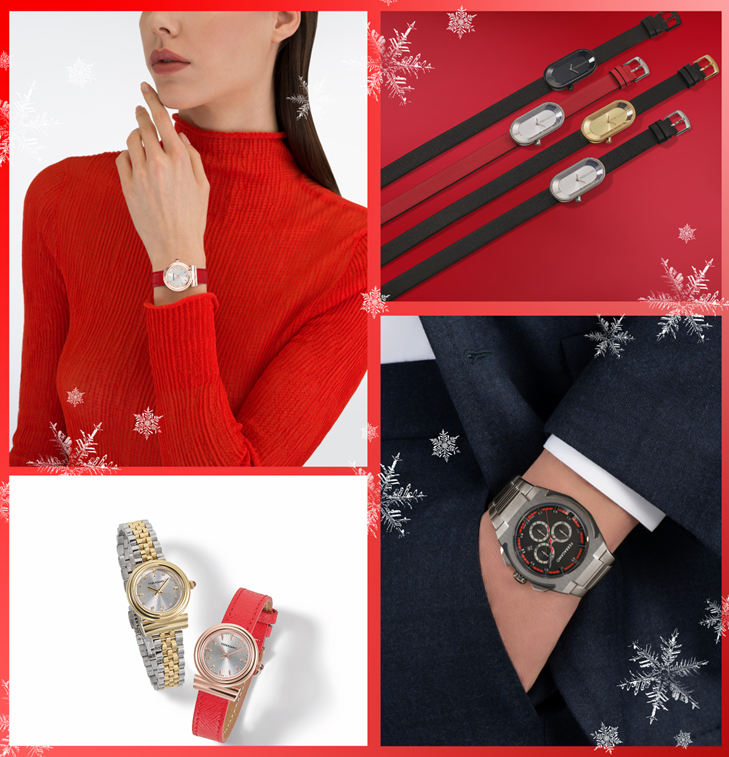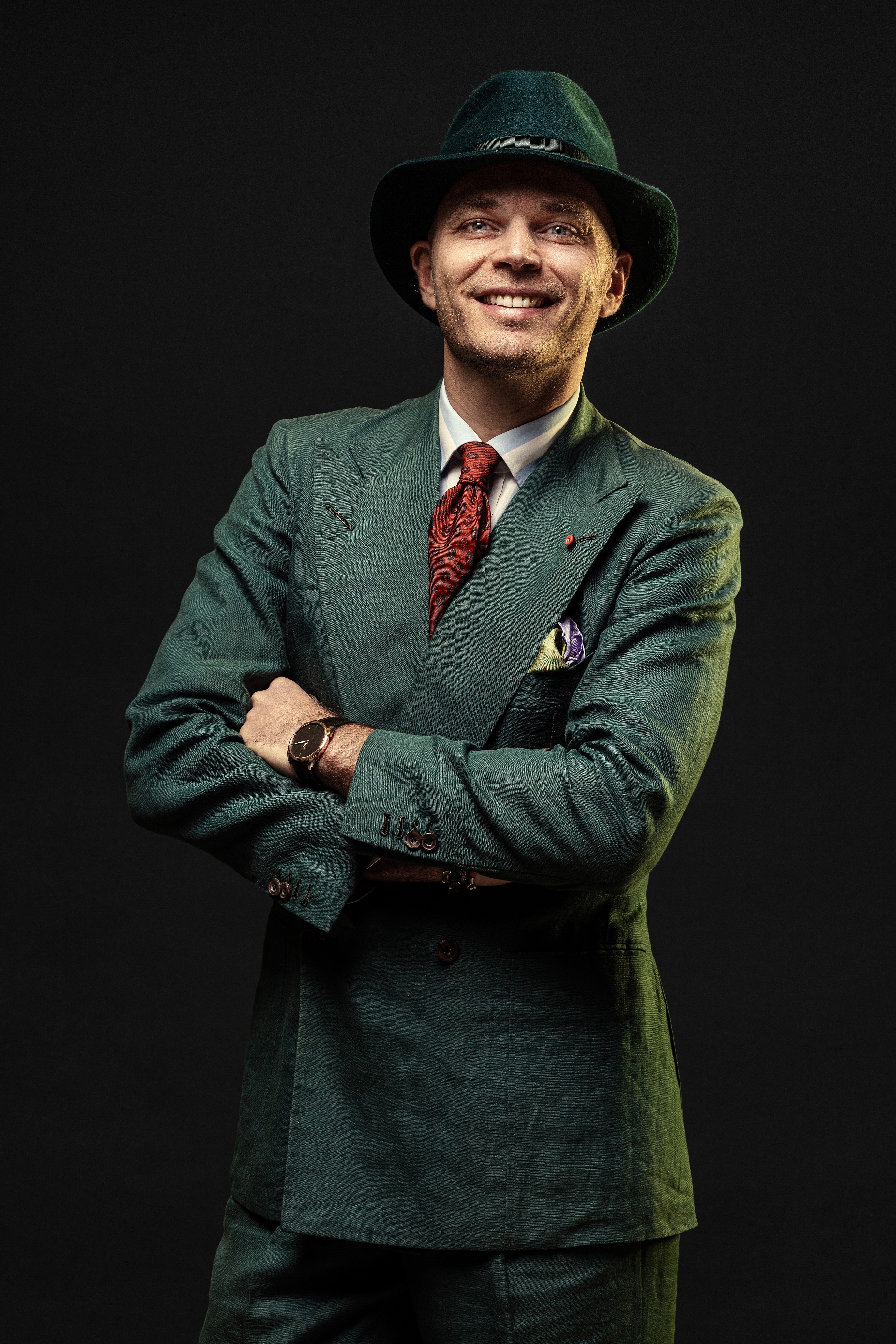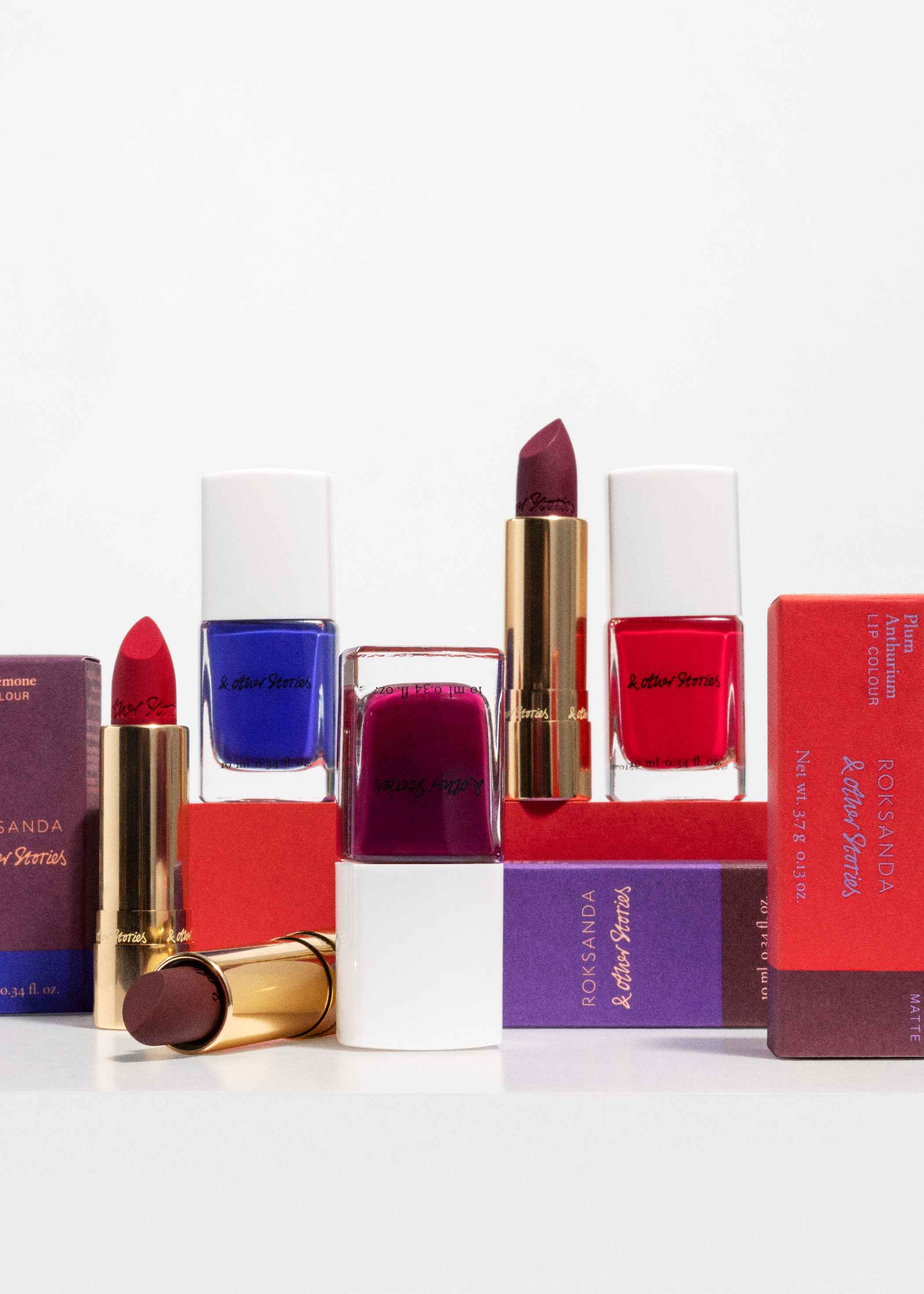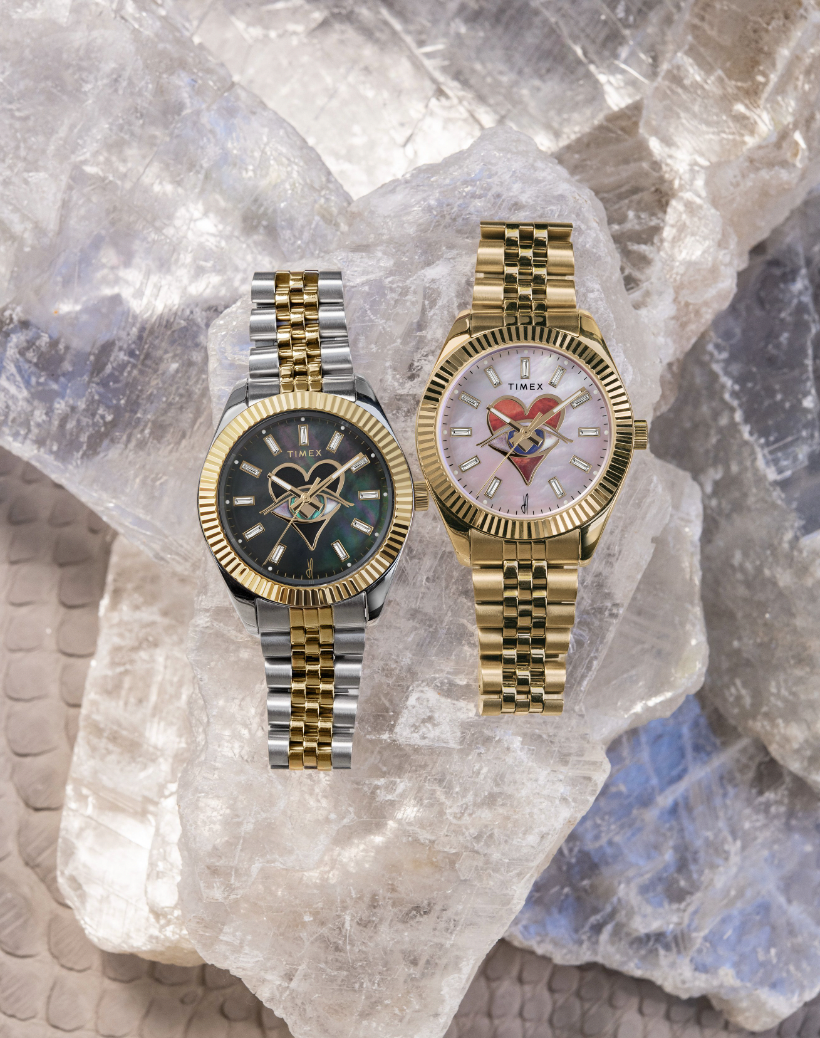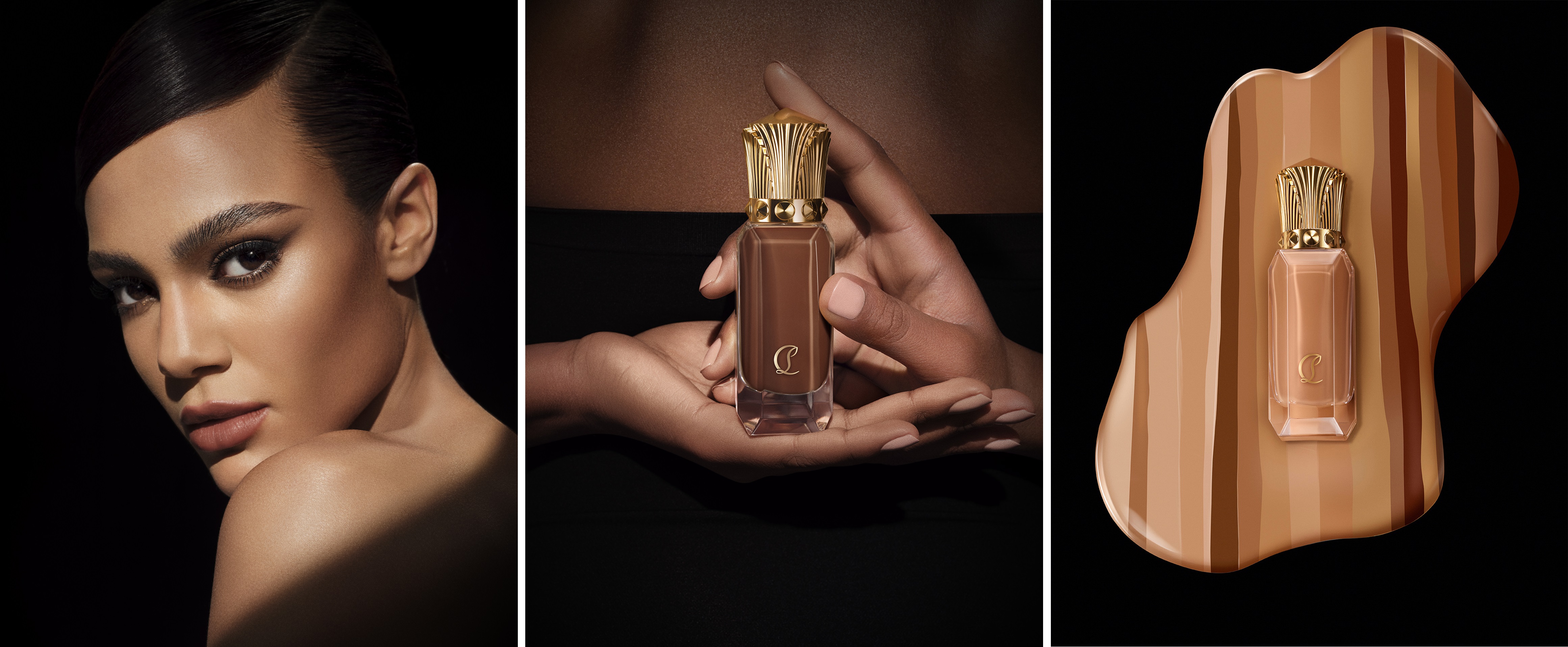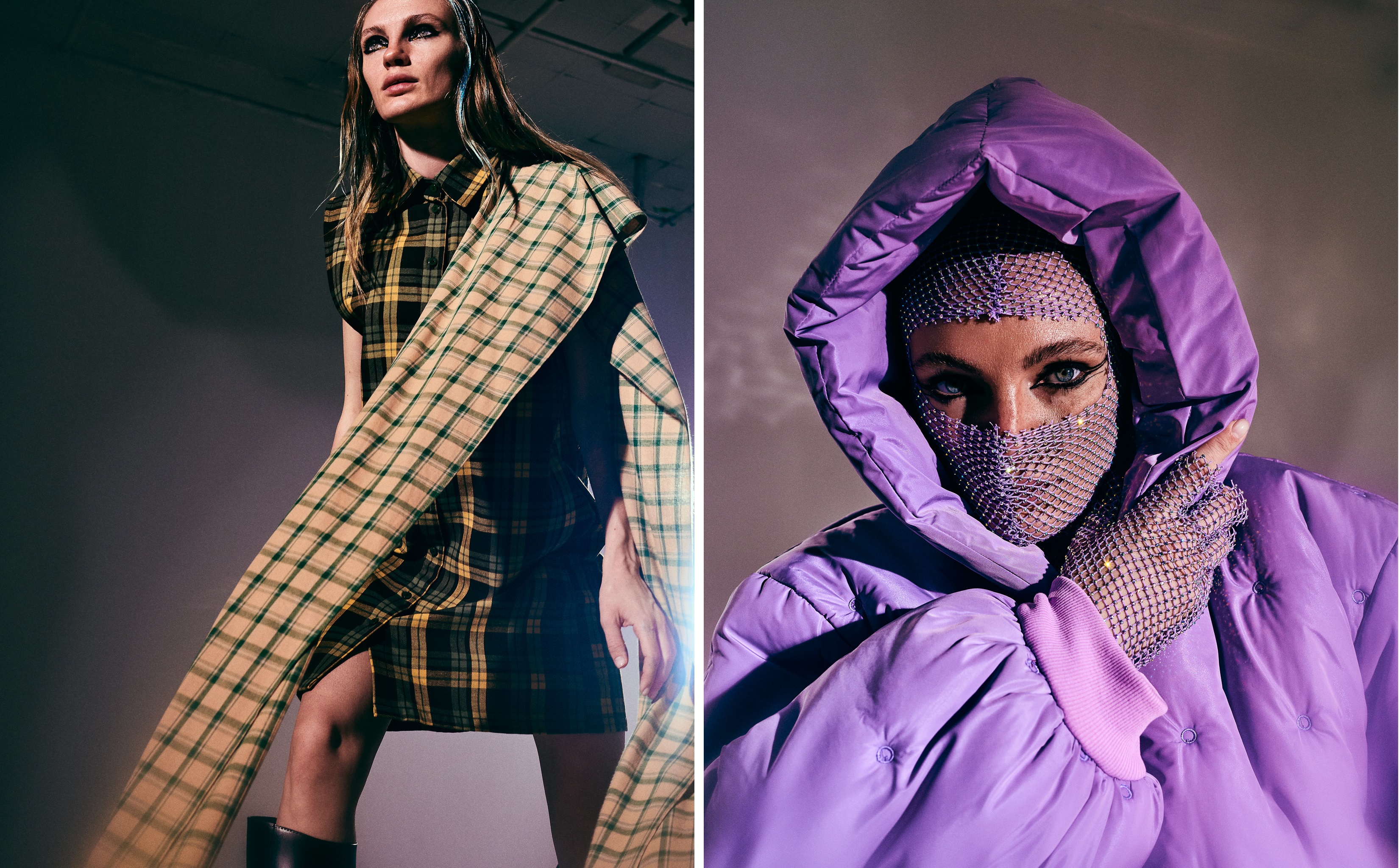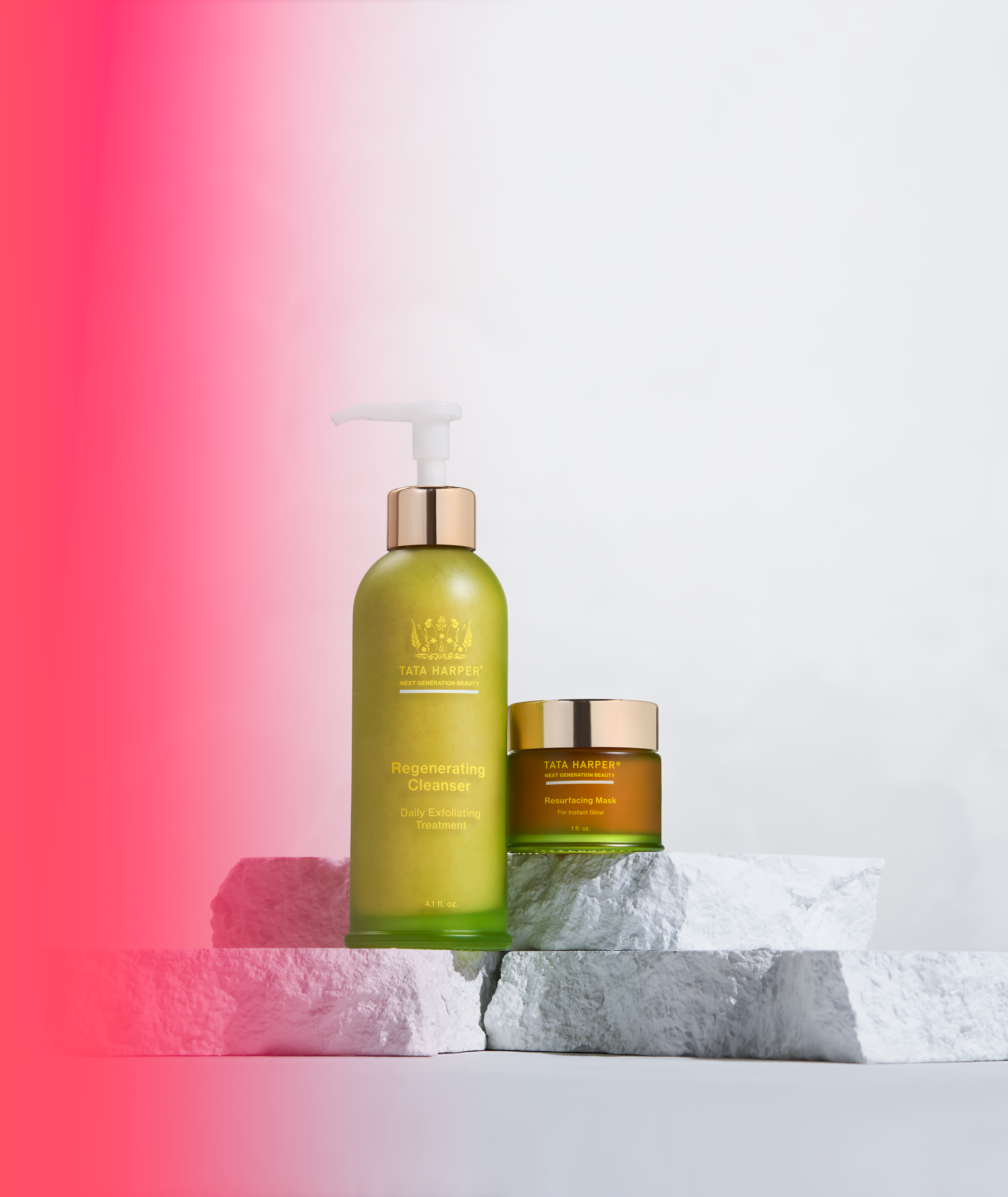Milan Fashion Week Spring/Summer 2026
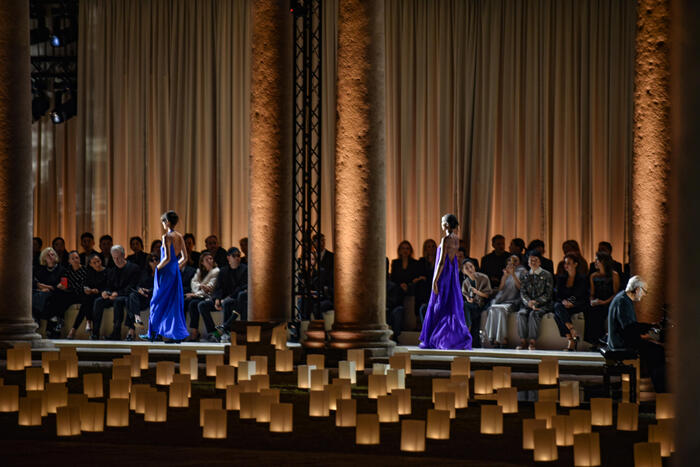
Milan Fashion Week Spring/Summer 2026 unfurled with a sense of heightened stakes. Heritage houses faced the daunting task of closing circles or opening new ones, while younger labels tested the very boundaries of what a runway can mean in an era where fashion is both performance and provocation. The week offered an unusually wide spectrum: from the sculptural rigor of Ferrari’s streamlined tailoring to Giorgio Armani’s poignant farewell, from Philipp Plein’s candy-colored tennis fantasia to Dolce & Gabbana’s star-studded pajama soirée. And in the midst of it all, new names such as Sa Su Phi used softness and philosophy to articulate a different kind of strength, while established brands like Versace, Bottega Veneta, Fendi and Ferragamo recalibrated their heritage codes through the fresh eyes of newly appointed creative directors. What emerged was a season defined by contrasts: light and shadow, excess and restraint, heritage and rebellion.
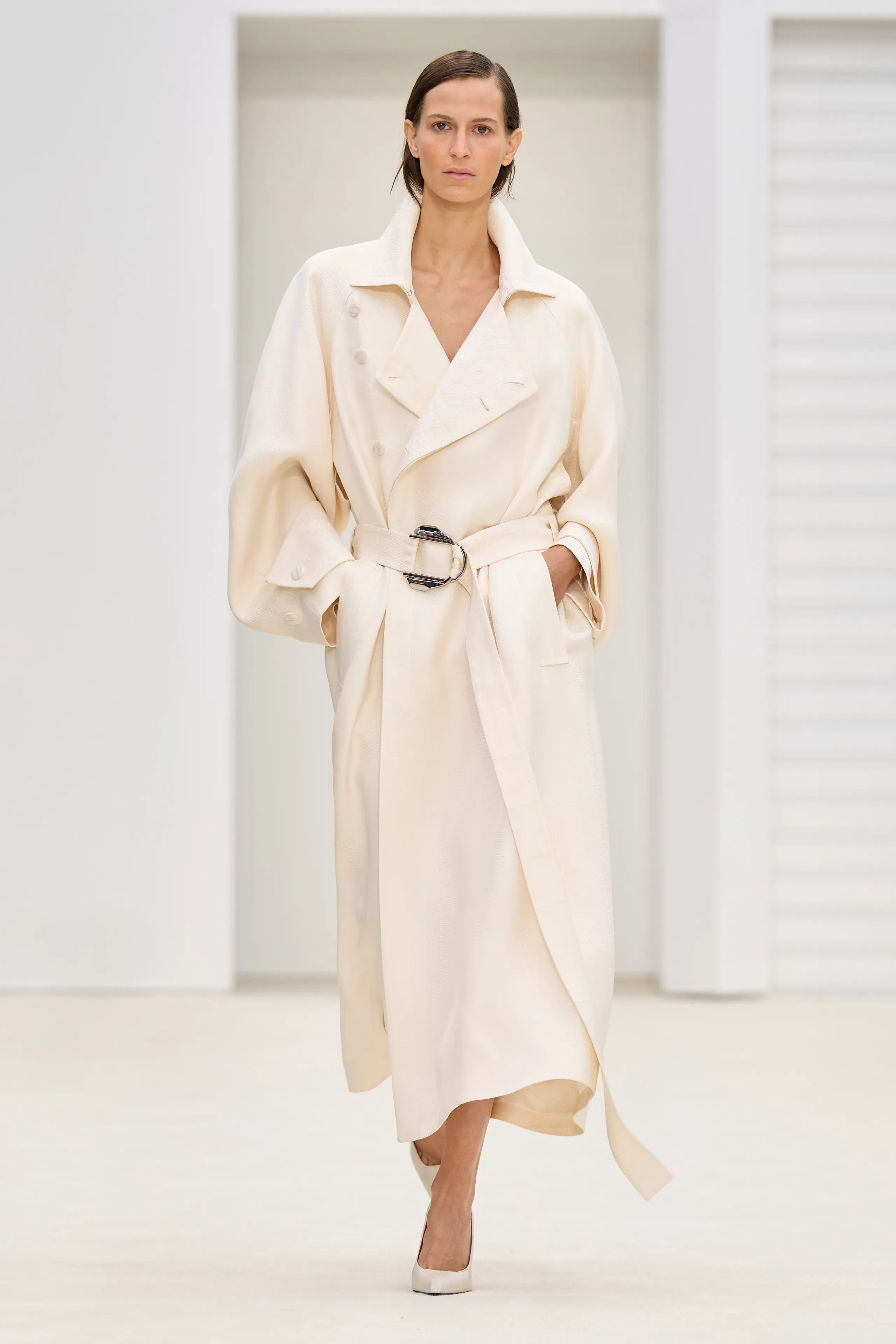
At Ferrari, Rocco Iannone continued his journey of aligning the automotive legend’s sartorial chapter with contemporary lifestyles. The Spring/Summer 2026 collection unfolded within an antiseptic white box, a deliberate emptiness that allowed color to carry the drama. The show was staged as a crescendo, beginning in clinical whites and gradually building to Ferrari’s unmistakable racing red. What struck most was the brand’s insistence on functionality: elongated dresses, relaxed tailoring, and fluid shirts paired with cargo pants suggested clothes that breathe, clothes meant to be lived in. The centerpiece was the “skirt-shirt,” a hybrid garment embodying Ferrari’s credo of garments that are simultaneously easy and powerful. After the tailoring came leather worked with tamponato finishes, acid-wash denim, and airbrushed knitwear, each piece vibrating with boldness yet tethered to pragmatism. Eveningwear shimmered in molten silver, sculptural and liquid at once, suggesting that Ferrari’s brand of luxury is about motion rather than stasis. Accessories echoed this ethos: pumps built from woven leather cords, square-toe driving shoes, and bags that balanced softness and geometry: the Dino Bag with its rounded contours and the angular Nello Tool Case. It was a wardrobe for contemporary travelers, dressed not just for spectacle but for speed, strength, and a kind of quiet futurism.
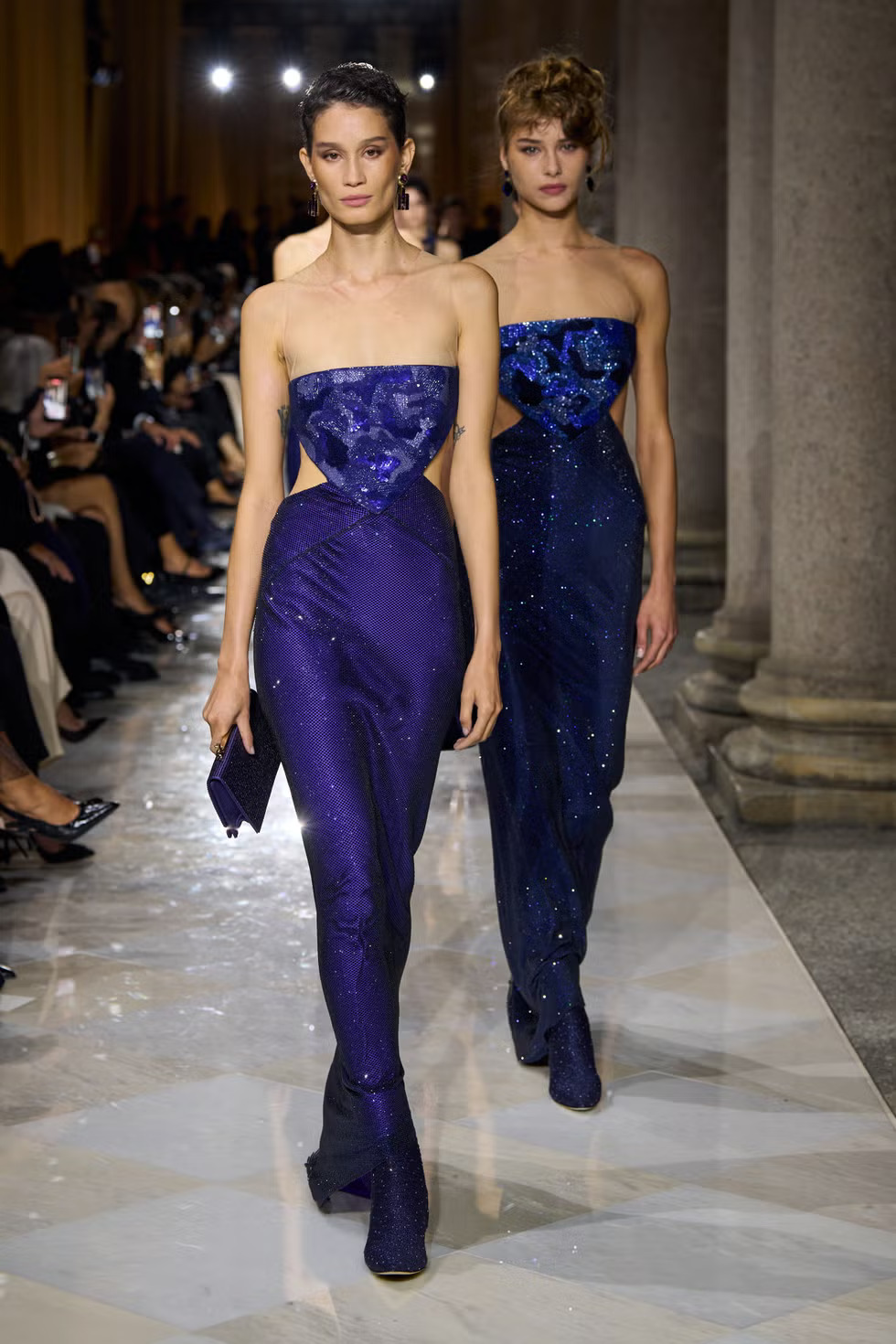
If Ferrari charted a path forward, Giorgio Armani wrote a final chapter. His Spring/Summer 2026 collection, poignantly titled “Pantelleria, Milano”, marked the designer’s last work before his passing earlier this month. It was a farewell staged at the Pinacoteca di Brera under the lantern-lit Milanese night sky, accompanied by the live piano of Ludovico Einaudi. Armani’s words hovered like a benediction: Pantelleria, his island of elemental contrasts, as “an elsewhere materialized,” and Milan as his “chosen city.” The collection carried the duality of those landscapes: Pantelleria’s flowing, sunlit blue ease versus Milan’s structured, greige urbanity. Fabrics whispered against the skin, unburdened by weight, silhouettes elongated in that unmistakable Armani rhythm that makes garments seem to breathe with their wearers. It was a show that moved from day to night, from white luminosity to the dark gleam of evening, ending with a shimmering gown printed with Armani’s own visage, glowing like a constellation. Longtime muses, from Cate Blanchett to Richard Gere, attended the soiree celebrating Armani’s legacy that spanned half a century. With “Pantelleria, Milano”, Armani gave the world a last whispered “arrivederci.”
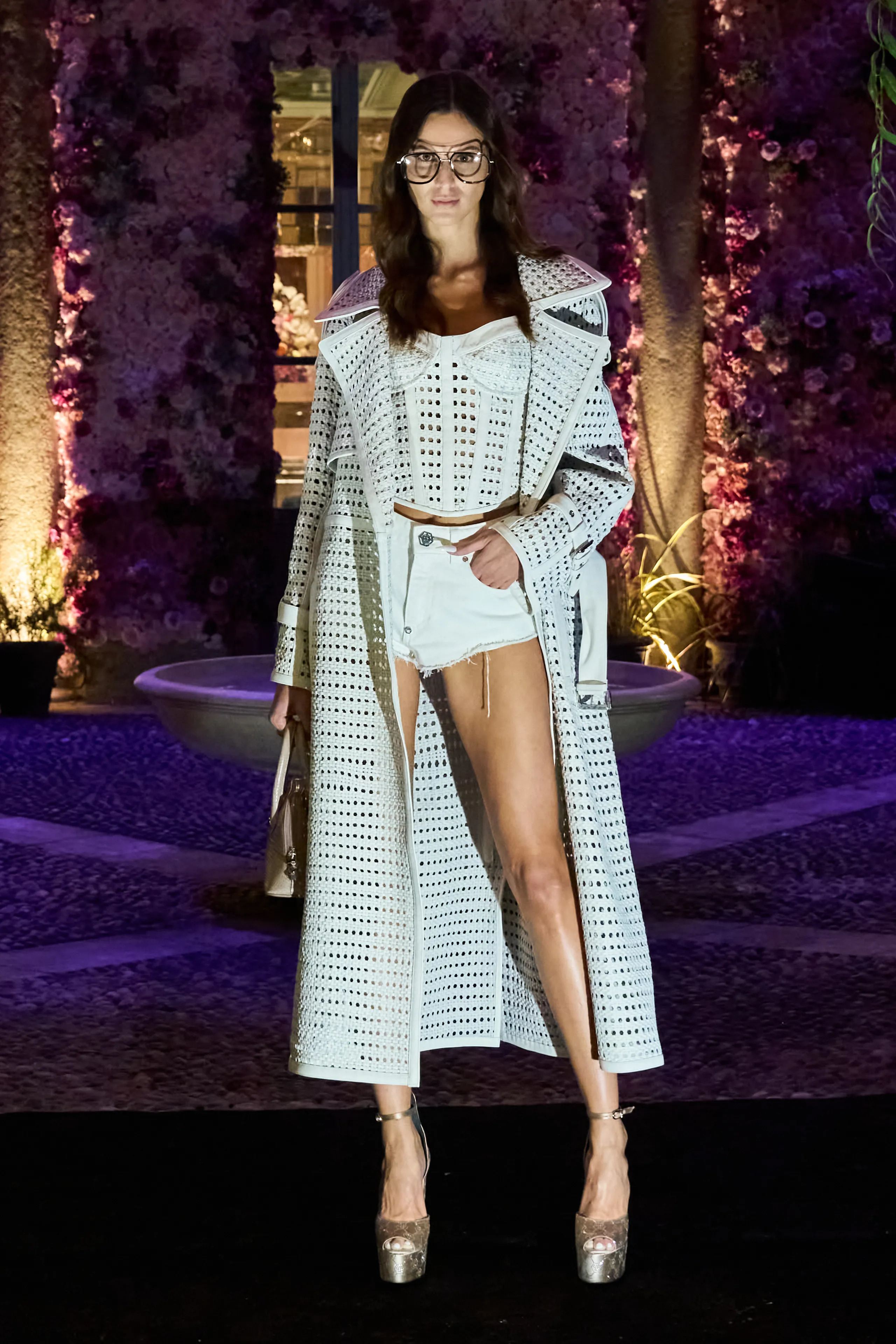
If Armani’s runway was elegiac, Philipp Plein’s was pure exuberance. On the first anniversary of his Plein Hotel in Milan, the German designer staged a collection drenched in tennis culture, a sport he once played “back when rackets were wooden,” as he joked backstage. The preppy spirit of Andre Agassi’s 1980s heyday infused the clothes, blending athleticism with the irreverence Plein has made his signature. A white woven leather trench, meticulous in craftsmanship, set the tone for a first act rooted in prep: blousons and corsets in earthy tones, menswear separates decorated with chevron motifs, and varsity jackets embroidered with playful French bulldogs and teddy bears recast as tennis pros. Retro ice cream graphics and strass patches added a cheeky sense of humor, a wink to nostalgia. The second half of the show shifted gears into unrestrained glamour: bedazzled gowns in neon brights, crystal-crusted blazers with matching thigh-high boots, graffiti-inspired studded jackets, and sparkling pinstripe suits. Plein ended the night by bringing rapper Rick Ross on stage, who performed “Every Day I’m Hustlin’” as the two wandered among models dressed as preppies, showgirls, and comic-bookish eccentrics. It was a finale that underlined Plein’s philosophy: fashion is theater, business is hustle, and everything must dazzle while it sells.
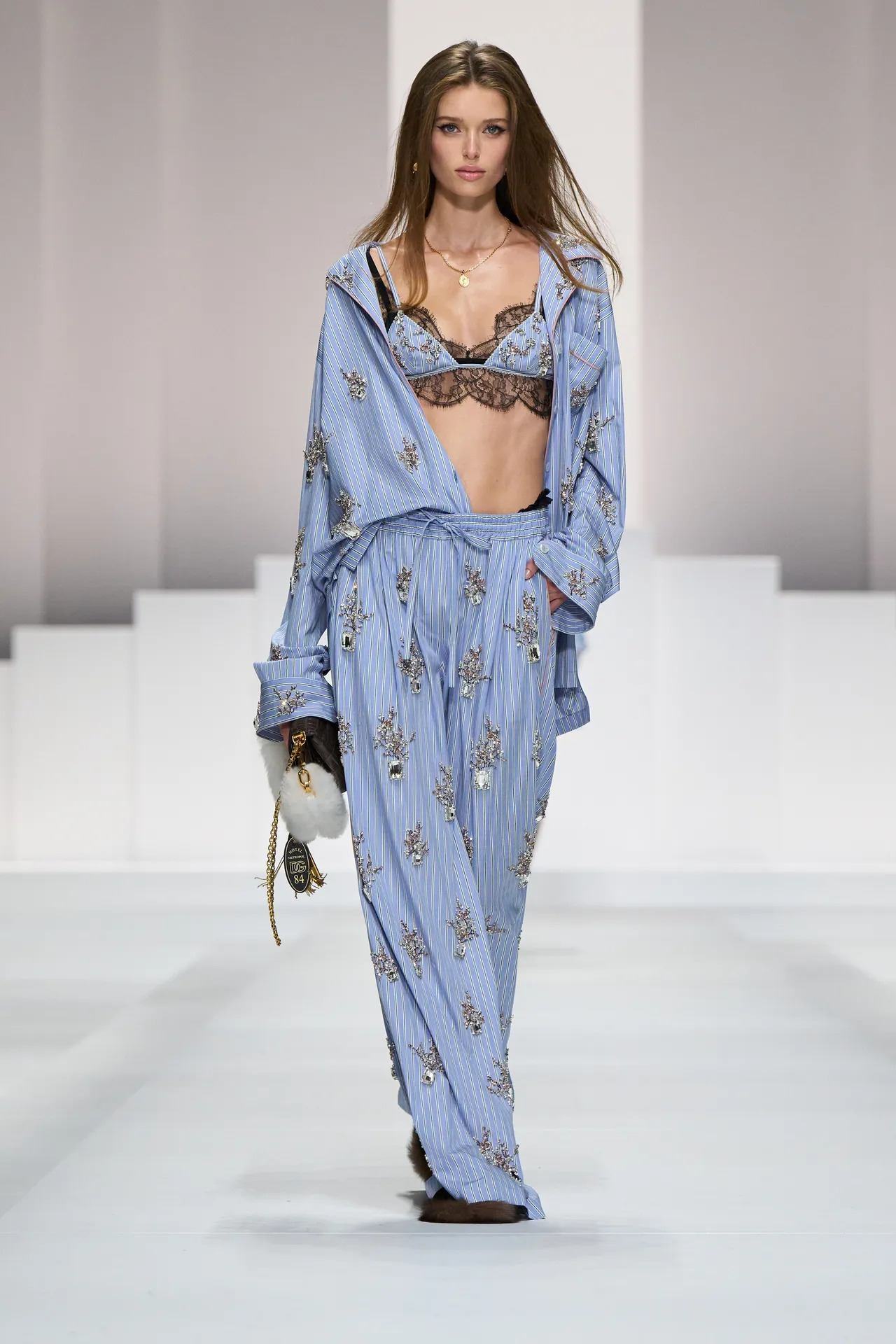
Dolce & Gabbana, ever masters of narrative, staged what may go down as the most cinematic moment of the season. As guests settled into their seats, Meryl Streep and Stanley Tucci swept in, dressed once again as Miranda Priestly and Nigel Kipling from “The Devil Wears Prada”, for the upcoming sequel. Simone Ashley perched nearby, her new role still under wraps. Cameras flashed as Streep locked eyes with Anna Wintour herself, creating a hall-of-mirrors moment of art imitating life. Against this backdrop of meta-celebrity, Domenico Dolce and Stefano Gabbana presented a pajama party that revisited their men’s collection from June. This time, it was women’s turn to revel in striped pajamas elevated by floral embroidery, clusters of crystals, or styled with lacy lingerie. Pajama bottoms were swapped for hosiery, jackets ranged from leather bombers to brocade heirlooms, and tailored tuxedos lent an after-dark gravitas. Eveningwear shimmered in black chiffon, paired with slippers as often as stilettos, emphasizing the designers’ point that today’s generation dresses with nonchalance, less about styling and more about ease. What might have been mere novelty felt instead like a meditation on intimacy and memory—the way clothing can bridge decades, references, and characters, both fictional and real.
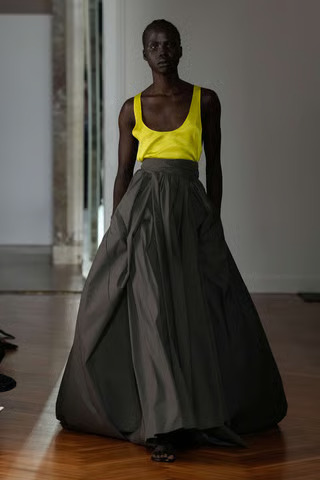
At the opposite end of spectacle was Sa Su Phi, a brand that chose philosophy over flash. Rooted in the Greek letter Phi, emblem of the golden ratio, Sa Su Phi redefined luxury not as opulence but as balance. The Spring/Summer 2026 collection drew from cashmere knitwear—soft against the skin, luxurious in its quietude—as its starting point. Silhouettes flowed with rigor and fluidity in equal measure: women’s shapes enveloping men’s, tailoring that was protective yet sensual. Volumes expanded without constraining, evoking both armor and vulnerability. Colors acted as therapy: red redefining borders, yellow illuminating, green grounding, ivory and black in counterpoint, softened by military tones and rose. The result was a wardrobe designed not for transformation but affirmation. “Ça suffit”—the French echo in the brand’s name—became the season’s mantra: enough of excess, enough of pretense. In Sa Su Phi’s world, fragility and strength coexist, fashion becomes philosophy, and women step into their day already whole.
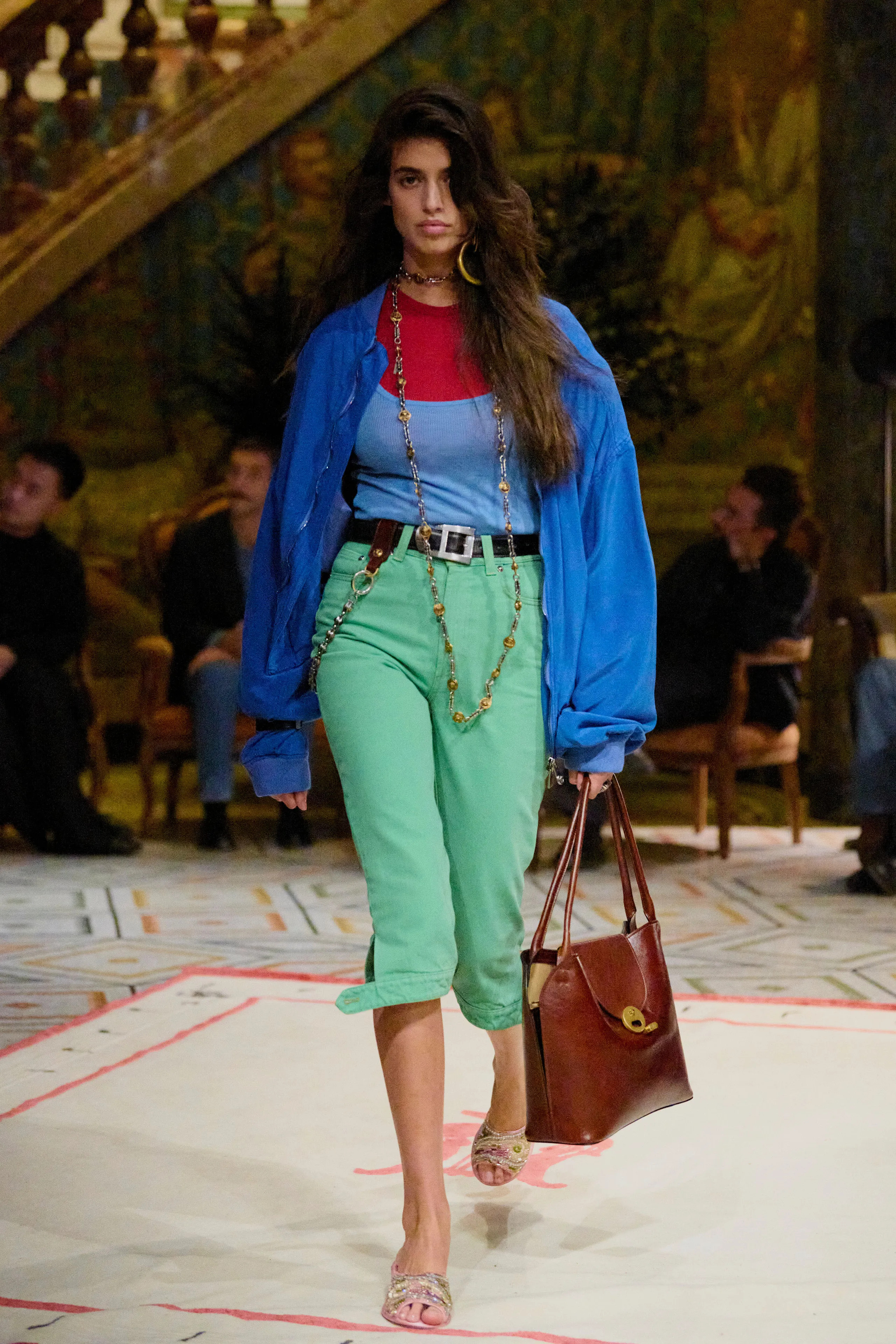
Beyond these shows, Milan thrummed with the energy of reinvention. Dario Vitale’s debut at Versace may have been the most scrutinized. The first non-Versace to helm the house, Vitale rejected the mythology of gowns and goddesses, offering instead undone sexiness rooted in Gianni’s late-’80s archive. Chain-mail skirts came with cardigans slung low on the hips, muscle tees bore raw edges, and jersey dresses revealed more leaving than arriving. His Versace was millennial, playful, and far more real-world than Olympus.
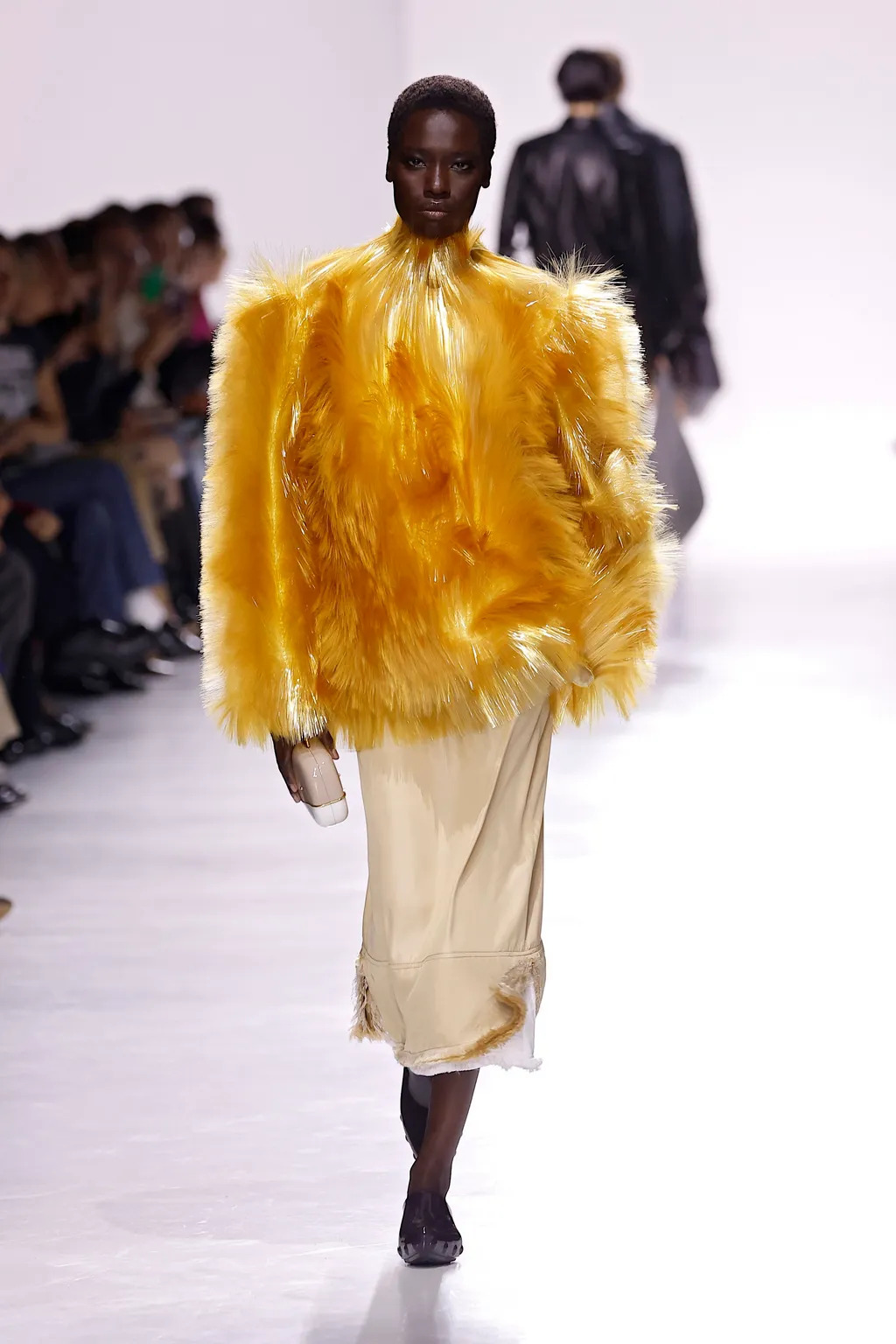
Louise Trotter’s debut at Bottega Veneta carried the weight of craft. From intrecciato coats resembling snakeskin to recycled fiberglass knits that shimmered like fur, her collection balanced exaggeration and float. Accessories nodded to Lauren Hutton’s American Gigolo clutch, grounding innovation in legacy. Marco De Vincenzo at Etro turned to music, channeling La Niña del Sud’s fiery performance into a carnival of sequins, ruffles, and Mediterranean exuberance, a joyous defiance of the industry’s minimalist tide.
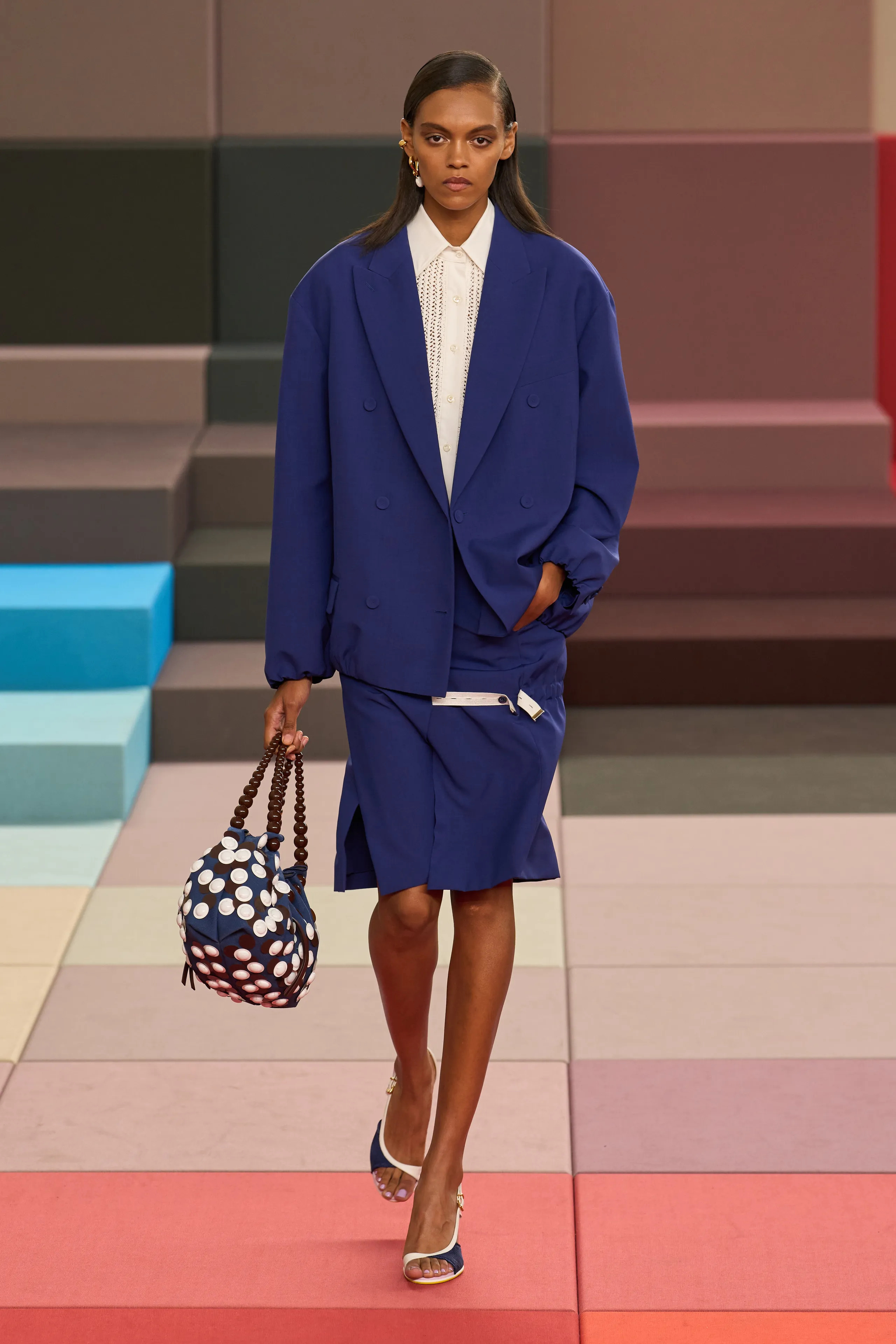
Fendi leaned into geometry this season, with sharp lines and tessellated patterns woven across leather and silk. The precision of tailoring echoed architectural grids, while accessories riffed on angularity: bags as sculptural puzzles, shoes carved like modular blocks. It was an ode to structure, balancing luxury with a mathematician’s sense of order.
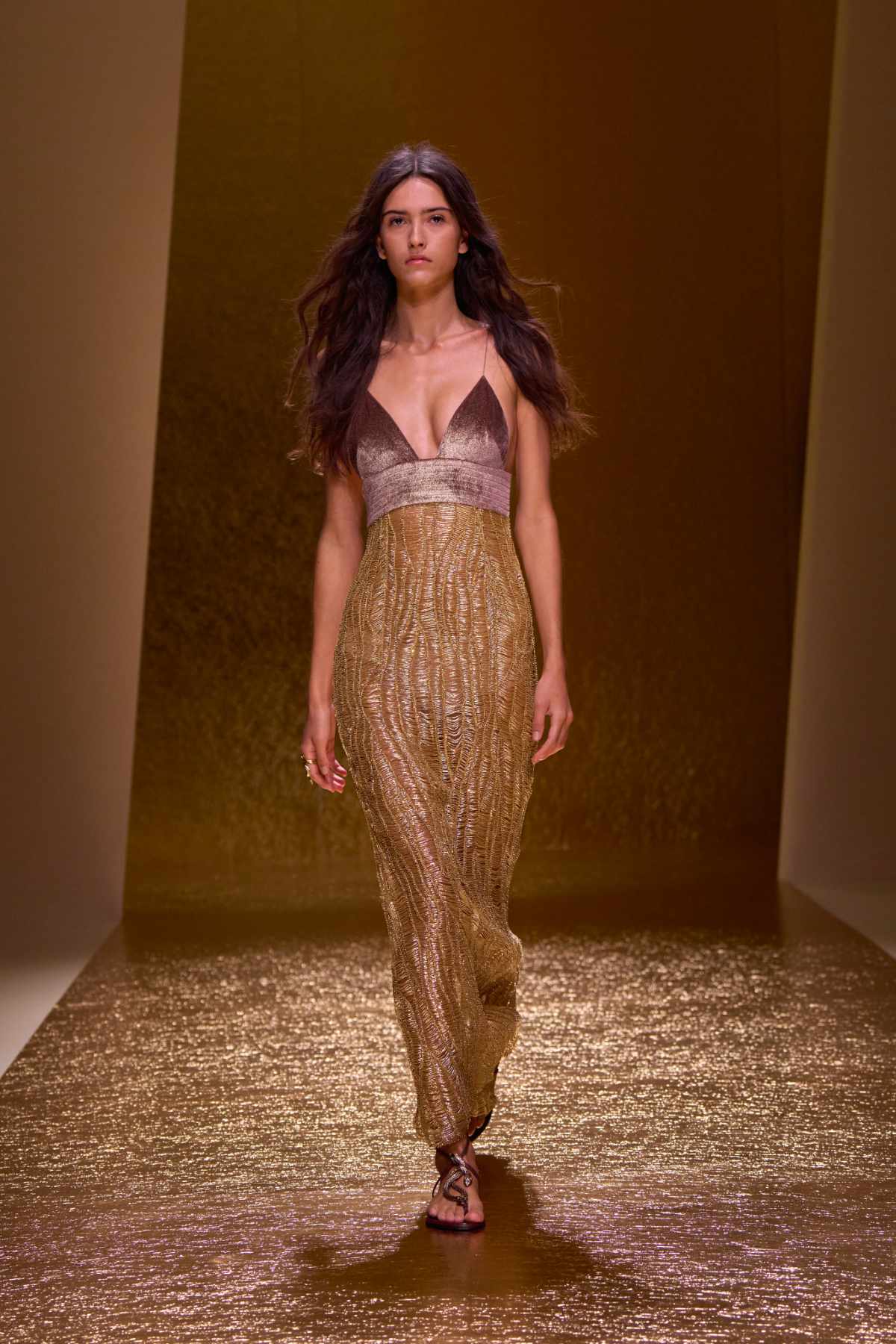
Roberto Cavalli, meanwhile, shimmered in gold. Fausto Puglisi turned the house into a gilded temple of sensuality: molten dresses clinging like liquid metal, golden animalier prints, and corseted silhouettes that glowed under spotlights. If Fendi looked to geometry, Cavalli looked to alchemy, turning fabric into fire and reminding Milan that excess, too, can be art.
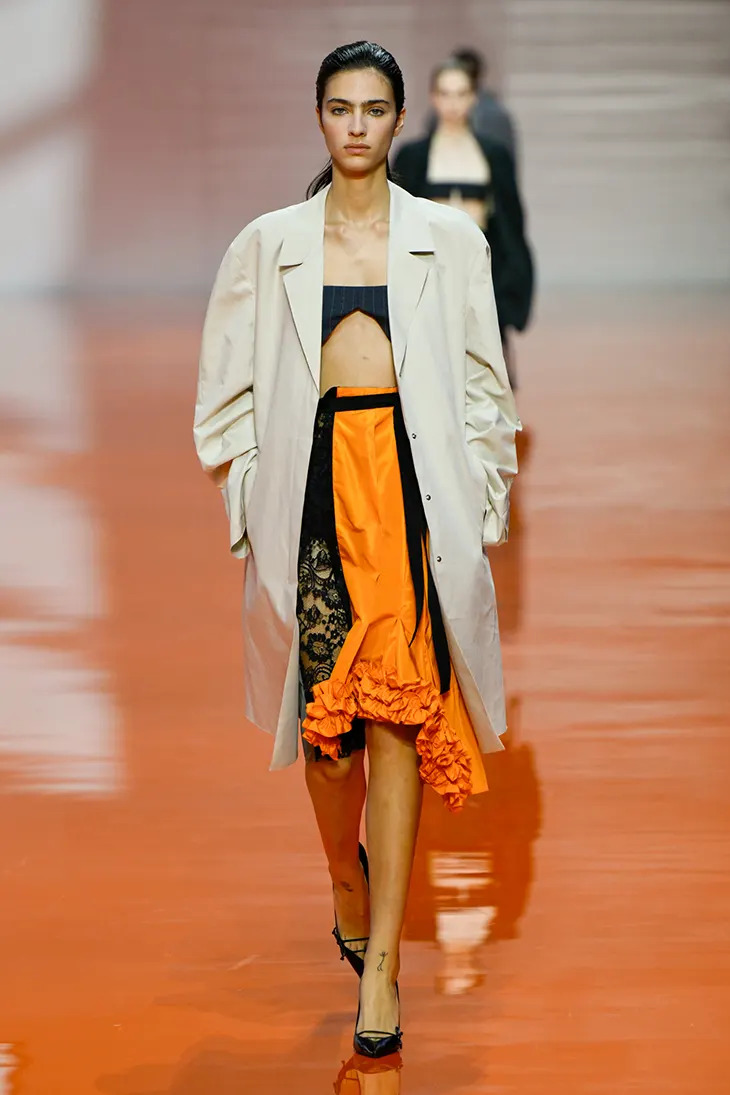
Prada continued to push conceptual minimalism, exploring layered asymmetry, unexpected proportions, and graphic silhouettes. The collection juxtaposed soft and structured fabrics, creating tension between fluidity and architectural precision, while tonal palettes shifted subtly from muted earths to sharp neutrals. Unexpected fabric combinations—nylon with silk, leather with knit—gave each look a sense of playful intellectual rigor, highlighting Prada’s capacity to balance avant-garde experimentation with wearable elegance. Accessories mirrored this approach, with sculptural bags, minimalist footwear, and jewelry that emphasized line over ornamentation. The overall effect was cerebral yet compelling, a collection where each detail suggested thoughtfulness, strategy, and a narrative unfolding with every step on the runway.
What tied these disparate visions together was Milan itself: a city of tradition and disruption, where the runway is simultaneously a cathedral and a stage. This season felt particularly transitional, punctuated by Armani’s farewell, Vitale’s risky debut, and Sunnei’s final bow. Some houses leaned into philosophy, others into spectacle, and still others into craft. Together, they told a story not of uniformity but of multiplicity, proving that fashion’s power lies in its contradictions. If Ferrari gave us strength, Armani gave us memory, Plein gave us play, Dolce & Gabbana gave us meta-drama, and Sa Su Phi gave us philosophy, the rest filled in the spectrum with energy, courage, and invention. Spring/Summer 2026 in Milan will be remembered for its chorus of voices, each insisting that fashion must remain alive, urgent, and—above all—human.
